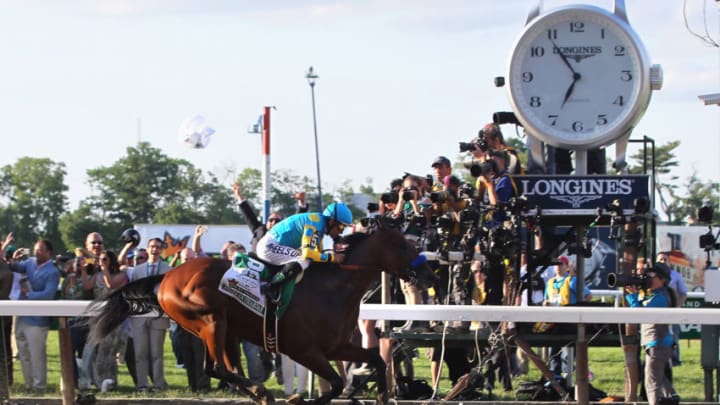
2. The test of a champion
The Belmont Stakes is called the test of a champion for a reason. It has consistently been the hardest race for Triple Crown hopefuls to win. Part of that is because of the schedule. For horses who run in the entire Triple Crown, the Belmont will be their third intense race in about 6 weeks. That’s a lot of stress to put on a very young body and a very young mind. There’s a reason that so few horses have won the Triple Crown, and a reason so many racehorses retire with significant injuries.
As the prestige (and money) for races aimed at younger horses has grown, the interest in racing these horses past their (very) early years has shrunk. It used to be that the most noteworthy races, with the greatest talent, were those for older horses. Here older is a very relative term, it means 4 and up. These races, known as “handicaps” adjust the amount of weight a horse has to carry based on their perceived speed. Faster/more proven horses have to carry more weight to theoretically even the playing field.
The Belmont is the test of a champion for a different reason. The horses in the race all carry the same amount of weight, and are roughly the same age. But the race asks them questions they have not been asked before and likely never will be again. First of all: The distance. One and 1/2 miles is quite a long way, and not many (or any) other races go that far. There was a time when one of the most prestigious races in the country was two miles long (the Jockey Club Gold Cup) and there were others that hit 1 5/8 miles. Those are long gone. The Jockey Club Gold Cup still is run, but it was cut down to 1 1/4 miles in 1990, and has not been as prominent since. That is just one example of this, and there are others.
But since the Triple Crown races have remained virtually unchanged since its inception, the Belmont remains.
A second reason the Belmont is seen as the ultimate test is the schedule. This too has been compounded in relatively recent years. When the Triple Crown was first held, it was actually not unusual for horses to race as often as every weekend or every other weekend. Some would even run in a race between the Preakness and Belmont. As knowledge of how the horses develop skeletally as increased the denseness of schedule has decreased. To the point that the Triple Crown remains, in all probability, the only time these horses will be asked to run three times in just over a month their whole careers.
